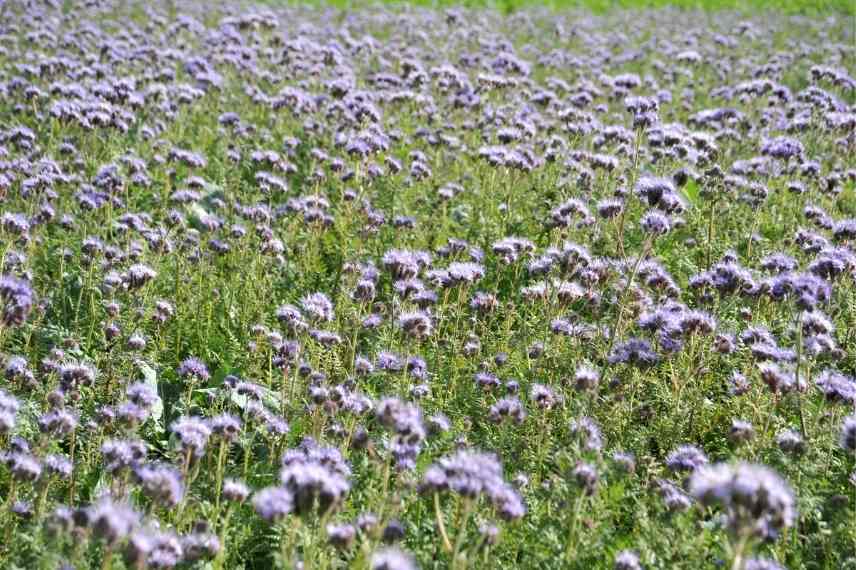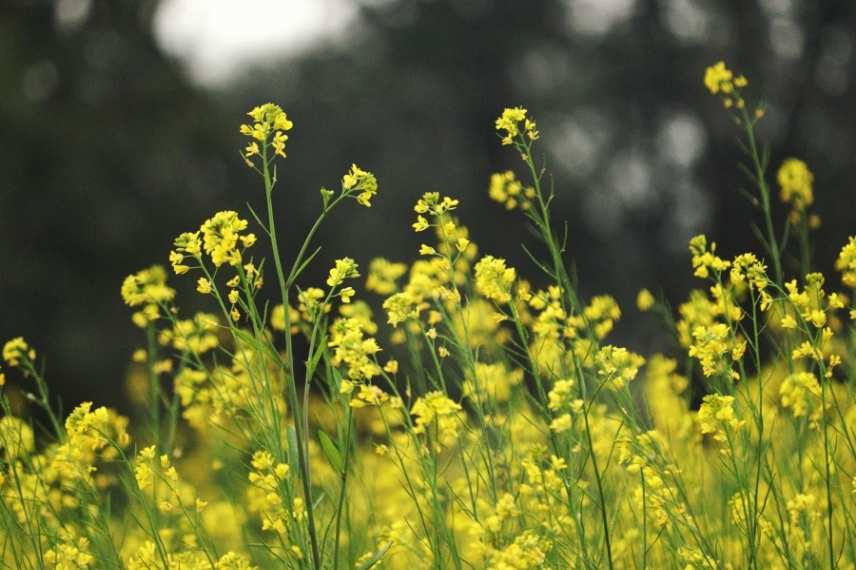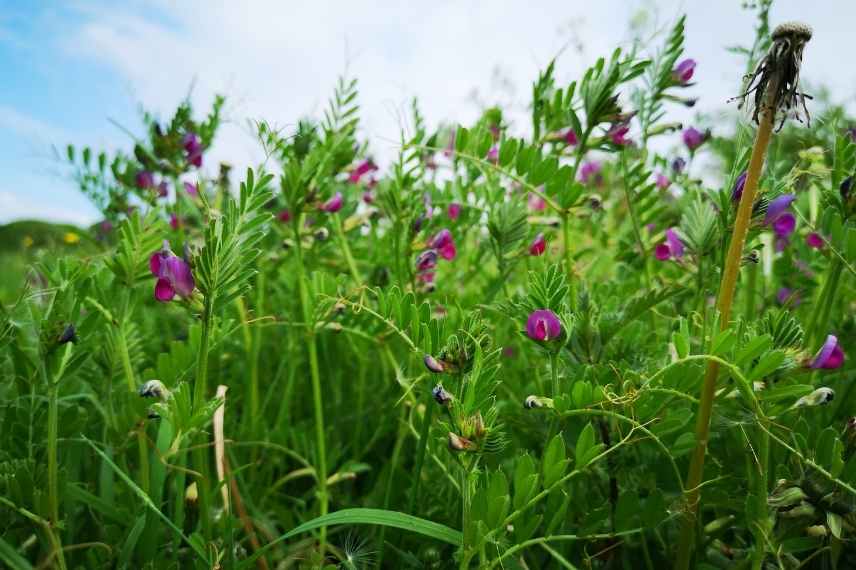
Combining Green Manures and Vegetable Crops: A Winning Strategy
Tips and advice for living soil and a profitable harvest
Contents
In a vegetable garden, every patch of soil matters. And green manures can play an essential role. Far more than mere ground covers, green manures improve soil fertility and structure. By combining them wisely with vegetable crops, it’s possible to continuously nourish the soil and create a balanced, productive and sustainable ecosystem. But how to choose the right species? When is the best time to sow them? Should they be sown between two crops or between the ranks?
Discover how to fully integrate green manures into vegetable garden management, combining cultivation strategy with observation of living organisms to make the most of these precious plants.
What are green manures used for?
Green manures are true allies for maintaining, or even improving, the fertility and vitality of vegetable garden soil. By mastering their use, you can optimise soil structure, its water retention capacity, its biological life, and even its resistance to diseases and adventives.
The different functions of green manures
Thanks to their root system, green manures loosen the soil, promote air and water circulation, and prevent soil compaction and the formation of the infamous surface crust. Certain species like white mustard develop strong taproots capable of breaking up compacted soils, benefiting subsequent crops.
They also act as natural fertilisers: as they decompose, they return organic matter rich in minerals to the soil. Fabaceae (formerly legumes), for example, fix atmospheric nitrogen through their root nodosities, enriching the soil with this essential element for vegetable plant growth.
Another valuable function: soil cover, which limits erosion, reduces water evaporation and prevents the development of adventives. Sown after harvest or between crops, green manures create a protective vegetative blanket.
Some offer highly melliferous and nectariferous flowering that attracts pollinating insects.
Finally, certain species have a protective effect, acting on pathogenous organisms or pests. Mustard, for example, releases sulphur compounds with a biofumigant effect when incorporated green, which can limit soil diseases.

Phacelia is a green manure that produces abundant standing crop
The different families of green manures
The choice of green manure largely depends on the desired objectives. Here are the main families to know:
- Fabaceae (formerly legumes) such as spring vetch or winter vetch, white, purple or crimson clover, sainfoin, melilot, or alfalfa. They excel at nitrogen fixation. Ideal before demanding crops like Solanaceae (tomato, aubergine) or Cucurbitaceae.
- Poaceae (grasses) like rye, oats, ryegrass. They produce abundant standing crop, protect soil from winter leaching and help structure it. Their slow decomposition provides stable humus.
- Brassicaceae like mustard. Their vigorous rooting improves soil porosity. However, avoid using them before crops from the same family to prevent common Brassicaceae diseases.
- Phacelia and buckwheat (Boraginaceae and Polygonaceae families): unrelated to common vegetables, they’re perfect in crop rotation. They offer melliferous flowering and effective rooting while being easy to destroy.
The benefits of green manure mixtures
To maximise benefits, green manure mixtures or improving blends are increasingly used. A vetch-oat or rye mixture, for example, combines nitrogen fixation and soil structuring. You can also combine legumes, grasses and a melliferous plant to cover a wide range of needs.
Read also
Green manures: why, how?How to combine green manures with the vegetable garden?
Incorporating green manures into vegetable crop rotation is not just a simple addition, it’s a full-fledged cultivation strategy. Indeed, green manures are crops in their own right, just like vegetables. This means integrating them into your annual garden planning.
Green manures in crop rotations
In a traditional rotation system, green manures can be planted before a main crop to prepare and enrich the soil. For example, sowing phacelia and rye in autumn can precede tomatoes planted the following spring, while also protecting the soil over winter. Similarly, legumes will add nitrogen.
Green manures can also be sown after a short or early-season crop, to maintain living ground cover. After harvesting garlic or onions in summer, a fast-growing green manure like mustard or buckwheat can be planted until autumn.
Lastly, green manures can simply be sown between two seasons, as an intermediate crop.

White mustard can be sown after onions or garlic
Green manures as intercalary crops
Another strategy is to sow certain green manures as intercalary crops, meaning between rows of long-season crops, such as tomatoes, maize, or trained squashes. These green manures act as living ground cover, preventing adventive plants from taking hold. Their root system improves soil structure without excessively competing with the main crop, and they continuously stimulate soil biological activity while keeping it active.
For intercalary crops, gardeners should favour clover or phacelia. It’s important to choose species with moderate growth. Additionally, careful attention must be paid to light and watering management: intercalary plants should not cast too much shade on vegetable crops or deprive them of water.
How to choose the right green manure for your vegetable garden?
Pairing green manure with the following (or preceding) vegetable crop is not a matter of chance: it’s about making the most of their benefits without causing competition, deficiencies or health risks. For each type of vegetable, certain families of green manures are to be favoured, others to be avoided.
- Before heavy-feeding vegetables, often from the Solanaceae family, such as tomatoes, aubergines, peppers… it is recommended to sow a combination of two green manures, rye and spring vetch. For these so-called heavy-feeding vegetables, vetch enriches the soil with nitrogen, oats produce a balanced standing crop and improve the structure
- Before Brassicaceae such as cabbages, turnips, radishes… avoid sowing white mustard which can encourage the development of common pathogenous organisms, such as clubroot. It is preferable to use grasses like rye or phacelia for a structuring effect
- Before vegetable Fabaceae such as beans, peas, broad beans, it is recommended to sow non-nitrogen-fixing green manures like mustard and oats, which won’t deplete microbial life
- Before Cucurbitaceae (squashes, courgettes, cucumbers, melons…) A winter crop of rye or a mixture of vetch and phacelia allows for the return of abundant, well-decomposed organic matter at sowing or planting time. Indeed, these vegetable plants thrive in rich, loose soils
- Before fast-growing leaf vegetables such as lettuce, spinach, rocket, don’t hesitate to sow a fast-growing green manure (mustard or buckwheat) which regenerates the soil without hindering the establishment of a short crop.

Spring vetch is ideal when sown before heavy-feeding vegetables
When and how to sow and cut green manure?
To make the most of green manures, it’s essential to choose the right sowing time and master the planting and destruction techniques.
Sowing according to the seasons
Green manures can be sown at different times of the year:
- Spring sowing (from March) is ideal for filling gaps between early plantings and summer crops. Fast-growing species like mustard or phacelia are preferred
- Summer sowing takes place after harvesting early vegetables or while waiting for autumn crops. Buckwheat or crimson clover sowings are excellent for quick summer ground cover
- Autumn sowing (September-October) allows winter green manures like rye, winter vetch or corniculate bird’s-foot trefoil, a vetch-oat mixture or an improving mixture to be established, protecting the soil from cold, runoff and erosion
Sowing is generally done by broadcasting, or in rows for intercropping. Water well after sowing, especially in summer.
The idea is never to leave the soil bare for too long, as this encourages nutrient leaching, adventive growth and loss of structure.
Managing and destroying green manures
The destruction phase is just as crucial as sowing. It can be done using three techniques:
- By mowing or shredding: usually done before seeding to prevent invasion and make the material easier to decompose
- By incorporating into the soil: a classic method, but not always necessary. Shredded or mown residues can be lightly worked into the soil or left on the surface
- By surface mulching: a gentle alternative, leaving the standing crop as mulch to feed microorganisms without disturbing the soil.
- Subscribe!
- Contents































Comments